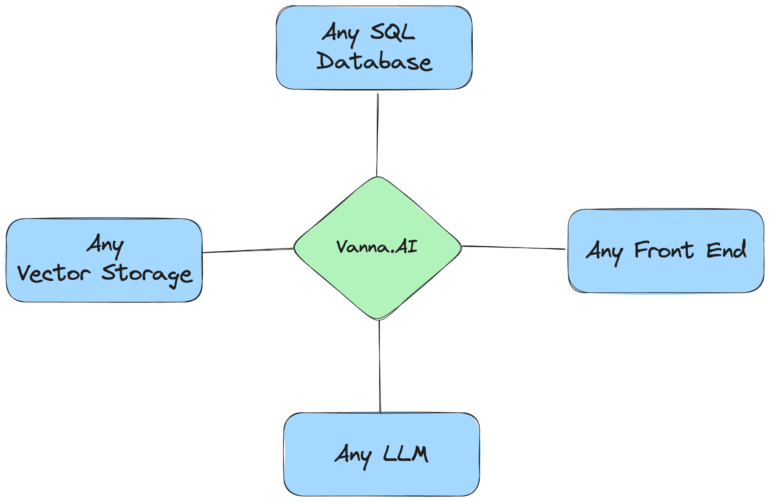TL;DR:
- Vanna is an open-source Python framework designed to simplify the process of SQL query generation.
- It employs a two-step approach involving a Retrieval-Augmented Generation (RAG) model.
- Vanna stands out for its simplicity, versatility, and adaptability to different databases.
- It offers a user-friendly training process using Data Definition Language (DDL) statements, documentation, or existing SQL queries.
- Vanna eliminates the need for manual query construction, making database interaction more accessible.
- The framework boasts high accuracy, particularly with complex datasets, and can adapt to various databases.
- Vanna prioritizes data privacy and security, ensuring that database contents remain within the local environment.
- It features a self-learning mechanism for continuous improvement and enhanced accuracy.
- Vanna provides a flexible front-end experience for various platforms and use cases.
Main AI News:
Crafting intricate SQL queries has long been a daunting challenge in the realm of database management. This task can prove especially formidable for individuals who lack expertise in SQL. The demand for a user-friendly solution that streamlines the SQL query generation process is both pressing and evident.
While existing methods for generating SQL queries do exist, they often necessitate a profound comprehension of the underlying database structure, consuming valuable time and resources. Some tools claim to assist with query creation, yet they may fall short in terms of adaptability to diverse databases or safeguarding data privacy and security.
Enter Vanna: a remarkably versatile open-source Python framework designed to revolutionize SQL generation. Vanna employs a two-step approach: first, it trains a state-of-the-art Retrieval-Augmented Generation (RAG) model on your data, and then it enables users to pose questions, yielding tailored SQL queries that align seamlessly with their specific database needs.
What sets Vanna apart from its competitors is its unwavering commitment to simplicity and versatility. Users have the liberty to train the model using Data Definition Language (DDL) statements, documentation, or pre-existing SQL queries. This approach ensures a personalized and user-friendly training experience.
Vanna gracefully processes your queries and furnishes SQL statements that can be executed directly on your database. This obviates the need for intricate manual query construction, offering a more accessible means for users to engage with their databases.
Notably, Vanna excels in terms of accuracy, particularly when dealing with complex datasets. Its adaptability across various databases and compatibility with Language Model Models (LLMs) render it a cost-effective and future-proof solution. Moreover, Vanna prioritizes security, safeguarding your database contents within your local environment without compromising on privacy.
Intriguingly, Vanna features a self-learning mechanism that further enhances its capabilities. When utilized in Jupyter Notebooks, it can be configured to “auto-train” based on successfully executed queries. In other interfaces, it prompts users for feedback, storing accurate question-to-SQL pairs to continually refine its performance and boost accuracy.
Whether you’re navigating a Jupyter Notebook or extending Vanna’s functionality to end-users via platforms such as Slackbot, web applications, or Streamlit apps, this framework delivers a remarkably flexible front-end experience. Its emphasis on ease of use, privacy protection, and robust security measures positions Vanna as a standout solution for those in search of an accessible and efficient approach to SQL query generation.
Conclusion:
Vanna’s emergence in the market signifies a significant advancement in the realm of SQL query generation. Its user-friendly approach, adaptability, and emphasis on data privacy make it a valuable tool for businesses and individuals seeking efficient and secure ways to interact with databases. Vanna’s potential to streamline complex SQL queries while maintaining high accuracy positions it as a game-changer in the database management landscape.

